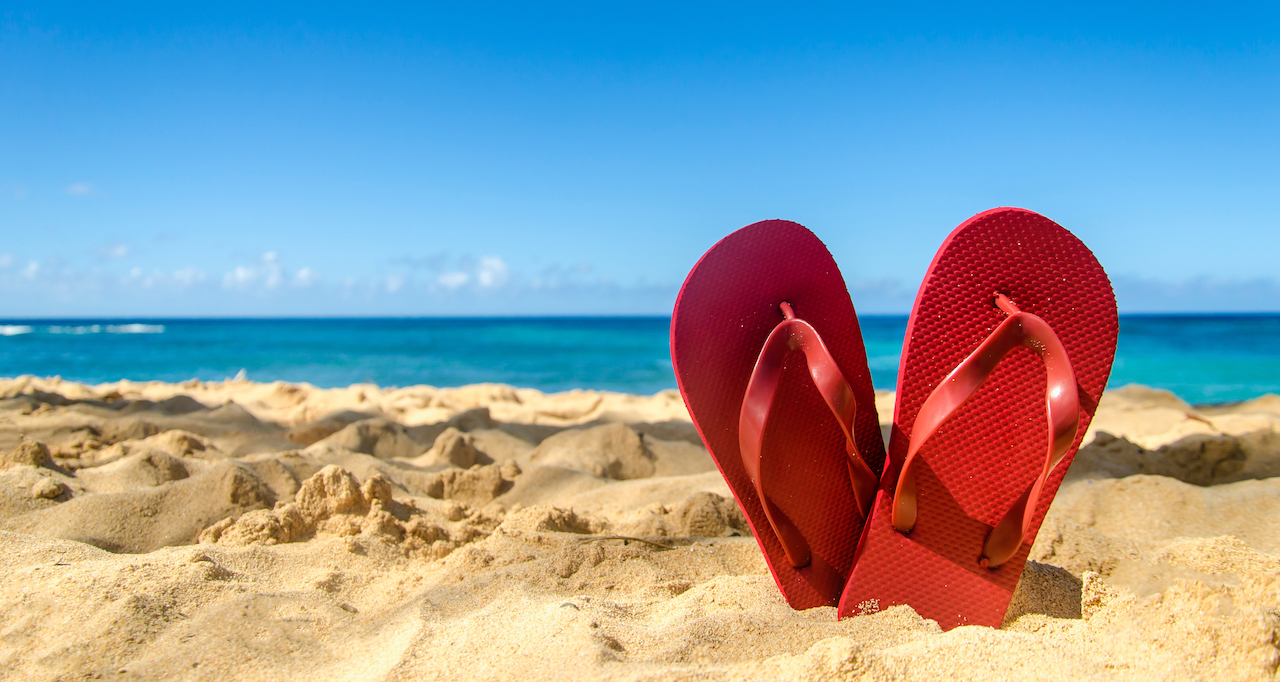They’re cheap, easy to slip on, and certainly help keep your toes cool on scorching hot days. The bad news though, is that flip-flops aren’t the most sensible and safest choice of footwear. These shoes are flimsy and provide little to no protection for your feet, making you vulnerable to foot pain, muscle fatigue, blisters, hammer toes, and injury.
Because of their lack of support, flip-flops can even change your natural gait (the way you walk), which can cause problems for your knees, hips and back.
What’s more, they’re a breeding ground for bacteria. Researchers at the University of Miami found that over 18 000 bacteria live on the average pair of flip-flops! And, many play host to the potentially lethal bacteria, Staphylococcus aureus, which can lead to serious infections and even limb amputation or death. Not what you signed up for when you grabbed them off the shelf.
But don’t panic just yet! Despite these dangers, there’s no need to ditch your go-to slops come summertime. Finding the right pair and wearing them at the right time can protect your tootsies and health.
Flop safely
- Don’t wear the same pair year after year. If they show signs of severe wear and tear, get rid of them.
- Buy a pair made from soft, high-quality leather to prevent blisters and irritation. Look for one with thick soles, arch support and wide straps.
- Make sure you buy the right size. Try before you buy. A good fit is vital to healthy feet.
- Check that they’re not flimsy. Gently bend the flip-flop from end to end. If it folds in half, it won’t offer any support for your foot. If it bends at the ball of the foot, it will support your foot properly and move with your foot while you walk.
- Only wear flip-flops around the pool, at the beach, and in and around the house.
- Avoid driving in flip-flops. Wear closed shoes instead. According to the American Automobile Association, many car accidents are caused by flip-flops, which can easily slide off under the gas pedal or brake.
- Don’t ignore redness, irritation or blisters developing between your toes as this can lead to infection. Stop wearing the flip-flops. Rather wear sandals that don’t separate your toes.
- Don’t walk long distances in flip-flops. They don’t offer any shock absorption or cushioning, so walking long distances in them will put a lot of strain on your feet.
- Don’t play sports in flip-flops. This can lead to twisting of the foot or ankle, and sprains and breaks. Wear sneakers when doing any physical activity
- Don’t do yard work while wearing flip-flops. You may accidentally drop something on your foot, stub your toe, or get bitten by something you’re allergic to. Always wear shoes that fully protect your feet when doing outdoor activities.
Skip the slops if…
- You have a foot injury. Wait for the injury to heal first.
- You have diabetes. You may injure your foot without feeling it.
- You’re overweight. Flip-flops won’t give your body the support it needs.
References:
- http://www.webmd.com/beauty/features/flip-flops-fun-but-not-great-for-feet#1
- https://www.symptomfind.com/health/safety-tips-for-wearing-flip-flops/
- http://www.wakehealth.edu/Health-Central/NMR/Flip-Flops/
- http://www.footfiles.com/health/orthopaedics/article/10-reasons-why-you-should-break-up-with-your-flip-flops

